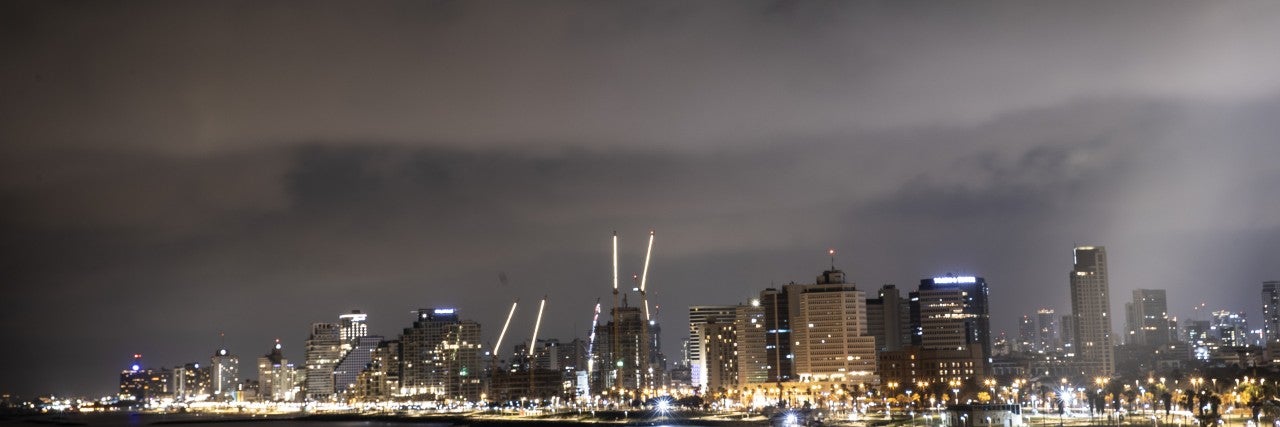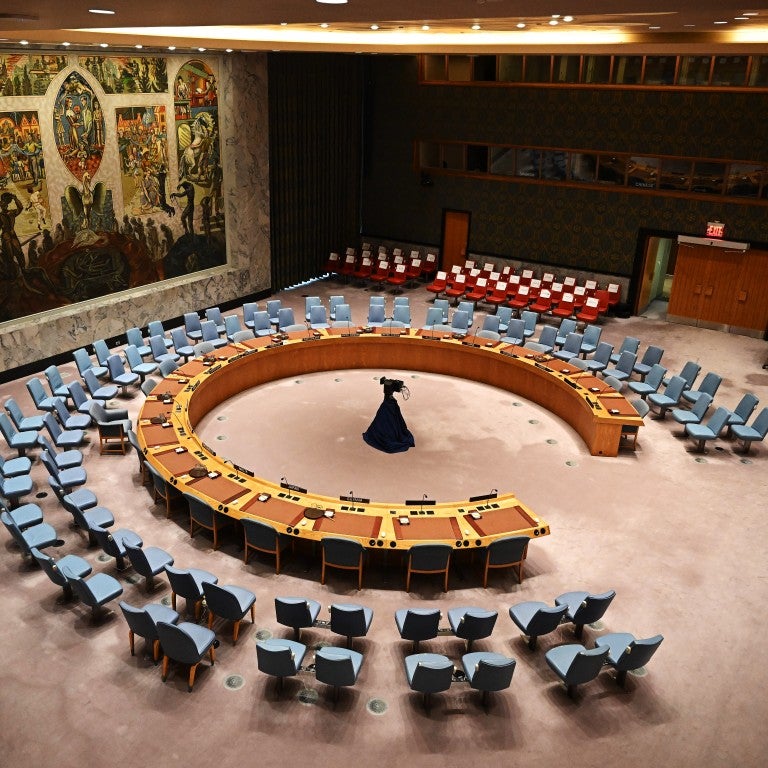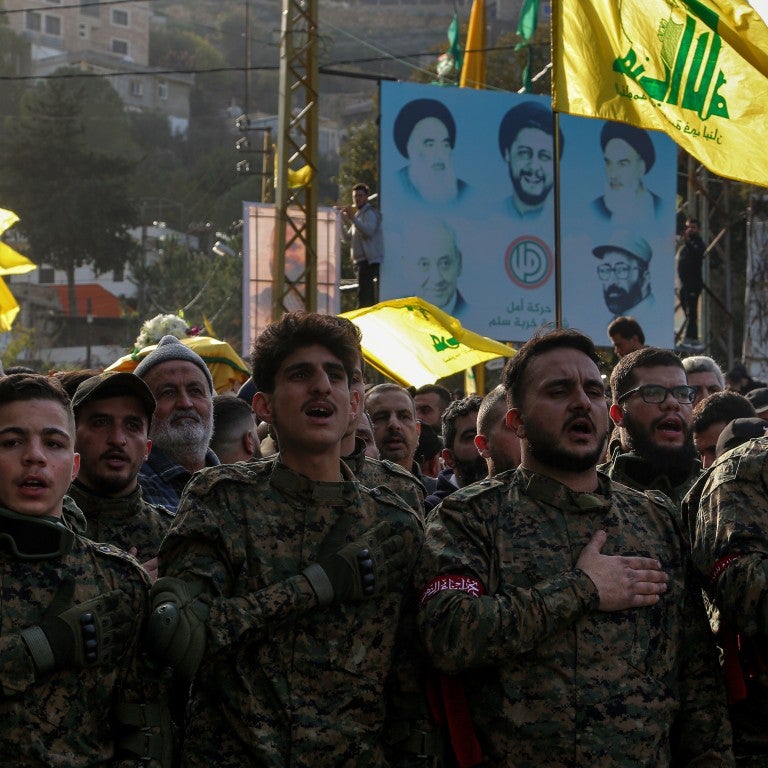April 19, 2024
In the early hours of April 14, sirens and explosions were heard nationwide in Israel as Iran launched a wave of more than 300 drones and missiles at the country in its first-ever direct attack on the Jewish state.
Here’s what we know about the unprecedented Iranian attack and the remarkable success achieved by Israel and its neighbors and allies in defense.
Get the facts about the October 1 attack.
What is known about the Iranian attack?
According to the Israel Defense Forces, the attack by Iran comprised 170 drones, 30 cruise missiles, and 120 ballistic missiles.
Remarkably, with help from Israel’s neighbors and allies, Israel’s multi-layered air defense system, which consists of the short-range Iron Dome, medium-range David’s Sling, and long-range Arrow 3 air defense systems, intercepted 99 percent of the aerial attacks.
All the drones and cruise missiles were downed outside of Israel’s airspace by the Israeli Air Force and other nations, including the United States, the United Kingdom, Jordan, and France.
The drones, which carry a warhead and explode upon reaching their target, had a long flight time of several hours and were downed well outside of Israel. The drones are the same ones that Iran provides to Russia to use in its war of aggression against Ukraine. Similarly, the cruise missiles also have a long flight time from Iran to Israel (about 800 miles) of approximately one hour.
Listen to AJC Jerusalem director Lt. Col. (res.) Avital Leibovich
However, the ballistic missiles fired by Iran have a much shorter flight time of around 10 minutes and are more challenging to intercept. As such, nine out of the 120 fired managed to evade Israel’s air defense and struck the country – causing minor damage to Israel’s Nevatim Air Base – home to Israel’s F-35 fighter jets – in southern Israel, damaging a Hercules cargo plane and out of service storage facilities and runway. Four missiles struck a second unnamed base, causing no serious damage. Shrapnel from an intercepted ballistic missile hit a Bedouin community in the Negev, which seriously injured a young girl.
Unlike the drones and cruise missiles, the ballistic missiles, which have the capability of carrying a nuclear warhead, were shot down inside of Israel by the long-range Arrow 3 air defense system. Some of the interceptions of the ballistic missiles appeared to have been destroyed in space high above Israel.
“Iran’s plan failed,” said IDF Spokesman Rear Adm. Daniel Hagari. “Out of hundreds of launches, only a few missiles entered Israeli territory and caused only minor damage to the infrastructure at the [Nevatim air force] base.”
Why did Iran attack Israel?
While Israel has faced indirect Iranian attacks for decades through its terror proxies such as Hezbollah in Lebanon, Hamas and Palestinian Islamic Jihad from Gaza and the West Bank, and more recently, the Houthis in Yemen, this was the first-ever direct attack by the Iranian regime on the Jewish state.
The Iranian regime claims that this attack was in response to the alleged April 1 Israeli airstrike on a building adjacent to the Iranian embassy in Damascus, Syria, reportedly killed seven members of Iran's Islamic Revolutionary Guard Corps (IRGC), a U.S.-designated terror organization. Among those killed was a top IRGC commander, Mohammad Reza Zahedi.
Zahedi oversaw Iranian-backed armed groups and selected targets for their attacks on U.S. and Israeli interests in the region. During his role in the Syrian civil war, he controlled the deployment of Iranian forces to aid Syrian President Bashar Assad.
Zahedi is the most senior IRGC official to be killed since the January 2020 killing of Qassem Soleimeni by a U.S. drone.
What do we know about Israel's response to the Iranian attack?
Israel reportedly carried out an airstrike on an Iranian military air base near the city of Isfahan, in central Iran, early on April 19. While there have been limited details released about the strike, it appears to be limited in scope and designed not to create further escalation in tensions between the two countries.
Isfahan is home to several military sites, including Iran's largest nuclear research complex. The International Atomic Energy Agency confirmed that the nuclear sites were not damaged.
What is the Islamic Revolutionary Guard Corps (IRGC)?
Not to be confused with Iran’s traditional armed forces, the IRGC is a parallel military body formed during the Islamic Revolution in 1979. It maintains its own air, land, and naval branches and protects Iran’s fundamentalist regime. Its special operations unit, the elite Quds Force, has helped establish proxy militias like Hezbollah in Lebanon, Syria, and Iraq.
The group reports directly to Supreme Leader Ayatollah Ali Khamenei and has an estimated 125,000 fighters, with army, navy, and air units. It also commands the Basij religious militia, a paramilitary force that has been used by Iran's clerics to crack down on anti-government protesters.
It also plays an essential role in Iran’s aggression. The Quds Force is the IRGC's paramilitary and espionage unit that heavily influences allied terror groups throughout the Middle East, from Lebanon to Yemen. Quds Force members have fought in support of Syrian President Bashar al-Assad during that country's civil war.
How is the international community responding?
While the Iranian attack on Israel was a serious turning point for the Middle East, perhaps more significant was the remarkable display of solidarity and mutual defense with Israel by its neighbors and international and regional allies.
According to the U.S. Central Command (CENTCOM), American forces destroyed more than 80 attack drones and at least six ballistic missiles aimed at Israel from Iran and Yemen.
“This was an incredible success, really proving Israel’s military superiority and just as critically, their diplomatic superiority, that they have friends in the region, that they have around the world that are willing to help them,” said John Kirby, White House national security spokesman.
Similarly, the air forces from the U.K., France, and Jordan played a role in shooting down drones and cruise missiles fired by Iran.
The day after the attack, the G-7 – which includes Canada, France, Germany, Italy, Japan, the U.K., and the U.S. – condemned “in the strongest terms” Iran’s “direct and unprecedented attack” and expressed “full solidarity and support to Israel and its people and reaffirm our commitment towards its security.”
“With its actions, Iran has further stepped toward the destabilization of the region and risks provoking an uncontrollable regional escalation. This must be avoided,” the G7 statement said.
Following the attack, President Joe Biden also spoke directly with Israeli Prime Minister Benjamin Netanyahu.
“I told [Netanyahu] that Israel demonstrated a remarkable capacity to defend against and defeat even unprecedented attacks — sending a clear message to its foes that they cannot effectively threaten the security of Israel,” he said.
In addition to the coalition that took part in Israel’s defense, many other countries also expressed their support for Israel and condemnation of Iran, including Australia, Estonia, Belgium, Ukraine, Netherlands, Germany, Czechia, Canada, Kenya, Poland, Sweden, Latvia, Moldova, Ecuador, Uruguay, Organization of American States (OAS), and Austria.
In a statement, American Jewish Committee (AJC) welcomed the outpouring of international solidarity with Israel and against Iranian terror: “We stand united with the people of Israel and pray for their safety as Iran launches dozens of drones toward the country. We vehemently condemn this act of aggression from Iran and thank the U.S. for its unwavering support for Israel during this critical time.”





